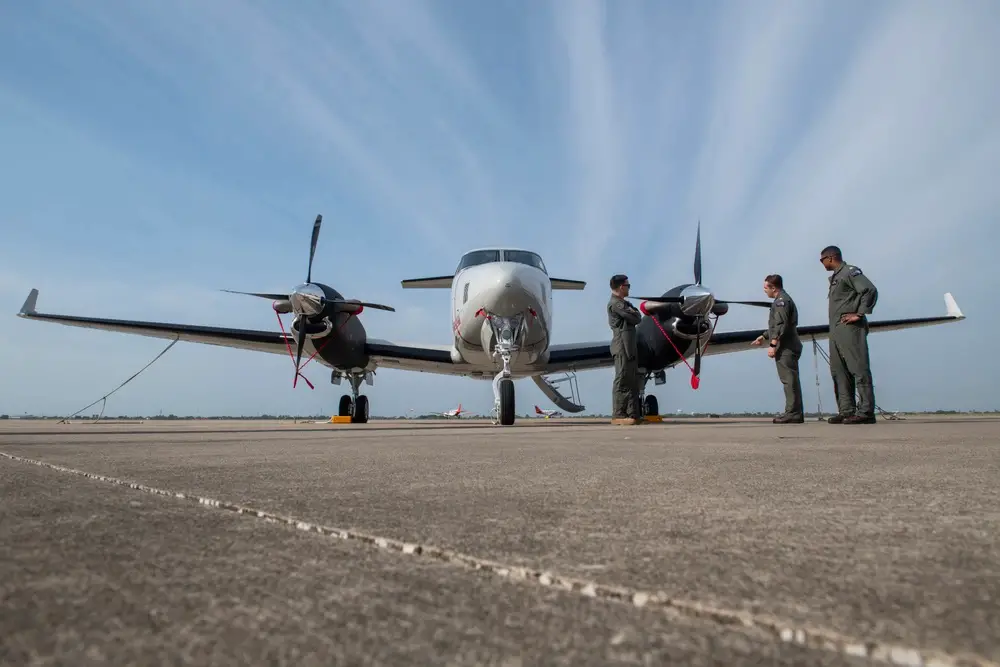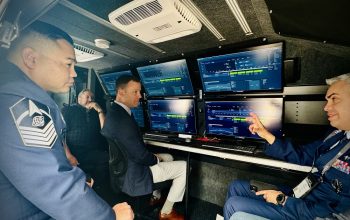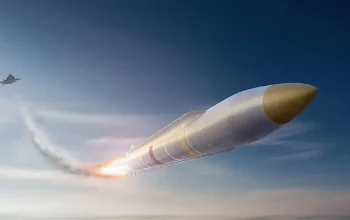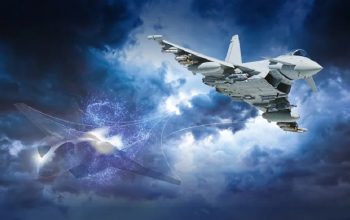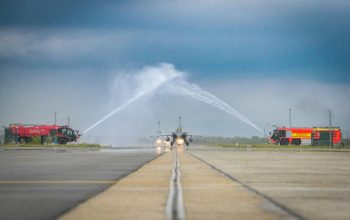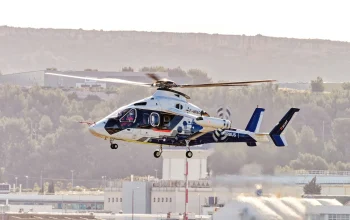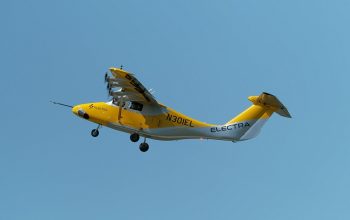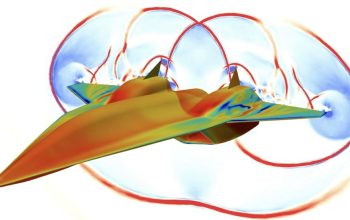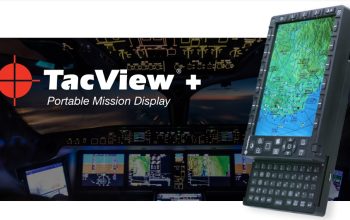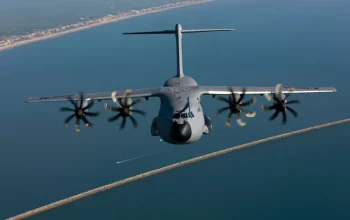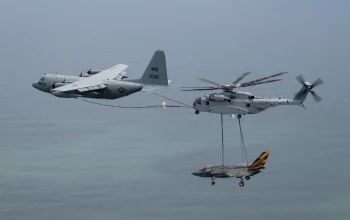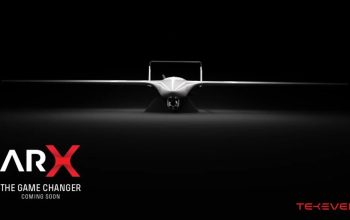Two T-54A multi-engine aircraft landed aboard Naval Air Station (NAS) Corpus Christi, April 18. The arrival of the T-54A heralds a new generation of Naval Aviators who will use the trainer to earn their wings of gold as they prepare to fly such aircraft as the P-8A Poseidon, E-2D Hawkeye and C-130 Hercules. The T-54A replaces the T-44C Pegasus, an aircraft that has been in naval service since 1977. The Navy awarded a contract to Textron in early 2023 to acquire up to 64 King Air 260 aircraft that will be designated as T-54A in the Navy’s training fleet. T-44C Pegasus is the Navy’s designation for the aging fleet of Beechcraft King Air 90 aircraft. The T-44C has successfully served generations of Naval Aviators after continuously supporting Training Air Wing (TAW) 4 efforts to routinely exceed Naval Aviator production requirements each year. Most recently, TAW-4 effectively employed the T-44C in achieving 110% of fiscal year 2023 requirements for Naval Aviator production. But as aviation and maritime warfare continue to evolve, the T-54A has arrived to better help Student Naval Aviators prepare for the
future.
“We produce the best multi-engine pilots in the world. The T-54A will be the training aircraft to carry that legacy into the future. With its ProLine Fusion avionics suite, combined with increased range, speed, and altitude, the T-54A will ensure that our aviators are well-prepared to operate complex fleet aircraft, and are ready for tomorrow’s challenges in a multi-domain environment. The T-44C Pegasus trained generations of Naval Aviators seeking to fly multi-engine platforms. So the arrival of the T-54A is a truly historic moment that signifies the Navy’s commitment to training our future pilots. Many will quickly notice that the new aircraft is not painted orange and white like the previous 70 years of naval air training. The new grey paint scheme is designed to bolster pride not only in our students but in our instructors.”,” said Capt. Michael Albus, commander TAW-4. Albus will oversee the introduction of the T-54A into the Navy’s two premier multi-engine training squadrons, Training Squadron (VT) 31 and VT-35.
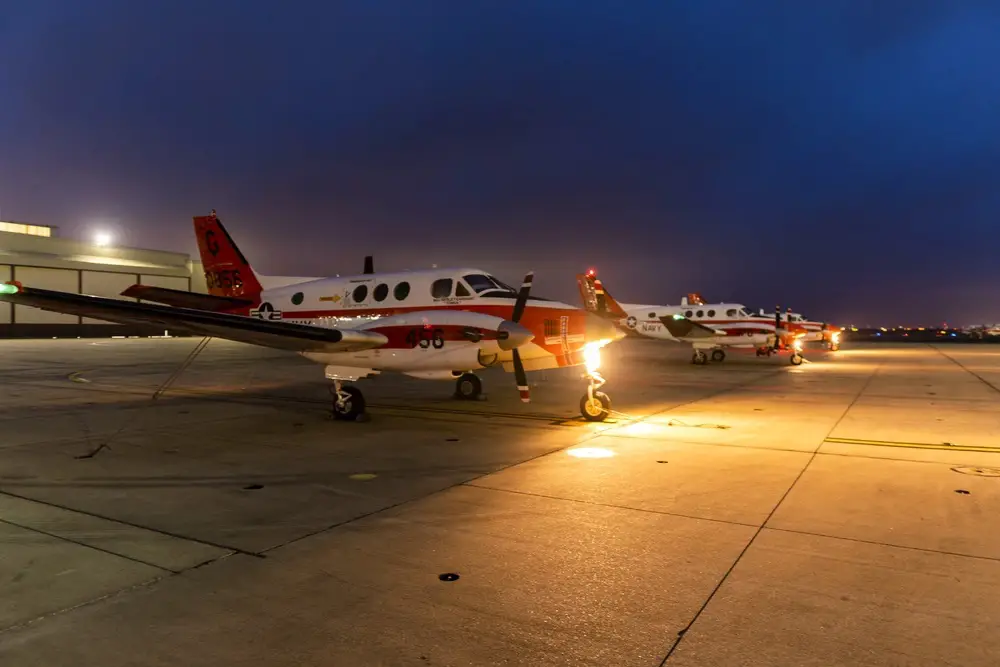
The arrival of the first multi-engine training system (METS) replacement in over 45 years is not just historic for TAW-4, but for the entire naval air training enterprise. This aircraft is the first of the Chief of Naval Air Training’s (CNATRA) entire fleet of over 650 aircraft to include a glossy grey paint scheme. This paint scheme, which was announced alongside a “Midway” blue paint coat for CNATRA’s T-6B Texan II aircraft, is an effort to reconnect students and instructors with the fleet. The glossy grey color of the T-54A reflects similar paint coats of the P-8A Poseidon and E-2D Hawkeye. Two crews ferried the aircraft back to NAS Corpus Christi after the Navy took possession of the aircraft days earlier in Wichita, Kansas. Cmdr. Kerry Bistline, TAW-4’s officer in charge of METS fixed wing training, was the flight leader for both crews.
Other crew members included Lt. Mike Stengel, Naval Aviator and instructor pilot who volunteered to help ferry the aircraft back home on its maiden voyage as an official naval aircraft. As more T-54A aircraft arrive, the T-44C Pegasus will slowly begin to phase out. Combined with the gradual repaint of T-6B Texan II aircraft, less and less orange-and-white aircraft will appear in the South Texas sky. Increasing numbers of new students in the advanced stage of training for multi-engine platforms will immediately begin to train in the T-54A as other students and instructors lead the T-44C to sundown. CNATRA trains, mentors, and delivers the highest quality Naval Aviators who prevail in competition, crisis, and conflict. Headquartered at NAS Corpus Christi, CNATRA comprises five training air wings in Florida, Mississippi, and Texas, which are home to 17 training squadrons. In addition, CNATRA oversees the Navy Flight Demonstration Squadron, the Blue Angels and the training curriculum for all fleet replacement squadrons.
